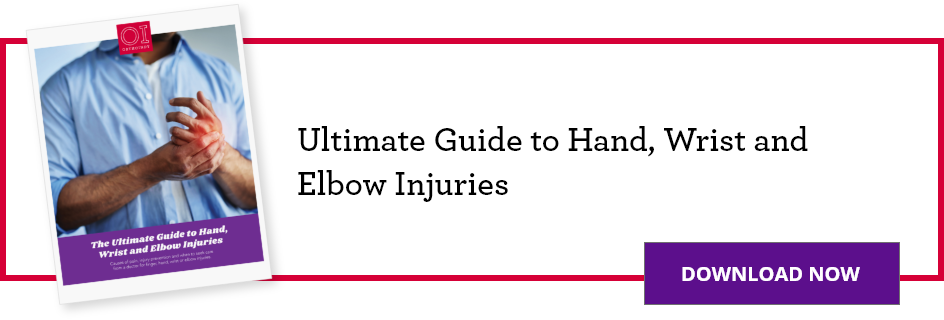THIS POST IS PART OF THE ULTIMATE GUIDE TO HAND, WRIST AND ELBOW INJURIES
Kienböck’s disease is a condition in which the blood supply to one of the small bones in the wrist is interrupted. This interruption is in one of the eight small carpal bones in the wrist, or the lunate bone, and can lead to death of the bone. The lunate is a central and important bone in the wrist that helps proper movement of the joint.
How rare is Kienböck’s disease?
Kienböck’s disease is a rare condition that can lead to chronic pain and dysfunction. Kienböck’s disease is also known as avascular necrosis of the lunate or osteocronosis of the lunate.
Bone is living tissue, which requires a regular supply of blood for nourishment. If the blood supply to a bone stops, the bone can die because of the lack of nutrients and oxygen. This is known as osteonecrosis.

Causes of Kienböck’s disease
Unfortunately, the cause of Kienböck’s disease is unknown. Oftentimes, people with Kienböck’s disease first think they have a sprained wrist. In fact, they may have experienced some form of trauma to the wrist, such as a fall. This kind of trauma can disrupt the blood flow to the lunate. However, unlike a sprain, the symptoms will persist and get worse.
There are additional causes to consider such as:
- Problems with arterial blood supply
- Blood does not drain away through the veins properly
- Abnormally shaped lunate bone
- The ulna, or the long bone in the forearm, is shorter than normal
There are additional causes to consider such as:
- Problems with arterial blood supply
- Blood does not drain away through the veins properly
- Abnormally shaped lunate bone
- The ulna, or the long bone in the forearm, is shorter than normal
Symptoms of Kienböck’s disease
- Limited range of motion and stiffness in the affected wrist
- Swollen wrist
- Pain
- Decreased grip in the hand
- Difficulty in turning the hand upward
The progression of Kienböck’s disease varies between patients, but typically it develops slowly over years and the mechanics of the wrist become affected.
There are four stages, which include:
- The lunate loses its blood supply; there may be swelling and pain.
- X-rays show that the bone is unusually dense
- The bone starts to fragment and collapse
- The lunate has completely collapsed resulting in nearby bones becoming damaged and arthritic; not all patients reach this stage
Treatment for Kienböck’s disease
Treatment usually depends on how early the disease is diagnosed.
- Resting the wrist
- Anti-inflammatory drugs
- Cortisone injections
There are several different surgical procedures for patients with Kienböck’s disease such as:
- Revascularization: restoring or increasing the blood supply
- Joint leveling: Bone grafts may be applied to lengthen the short bone in the forearm
- Proximal row carpectomy: Removal of the lunate bone and the two bones on either side of it
- Fusion: Fusing some of the wrist bones together to make one solid bone
- Implant arthroplasty: Replacing the lunate bone with a prosthetic replica
Learn more about hand, wrist and elbow treatment at OrthoIndy.
Schedule an appointment
Your well-being is important to us. Click the button below or call us to schedule an appointment with one of our orthopedic specialists. If your injury or condition is recent, you can walk right into one of our OrthoIndy Urgent Care locations for immediate care. For rehabilitation and physical therapy, no referral is needed to see one of our physical therapists.





